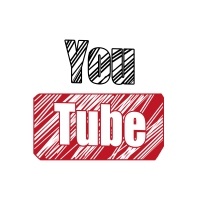By DYLAN DEMARTINO
STAFF WRITER

Graphic by Sam Joseph/The Ram
YouTube announced that it is phasing in a plan to begin charging users a fee to subscribe to certain uploaders’ channels. This plan would involve an agreement between YouTube and the content creators. It would include a minimum number of total subscribers as well as approval standard to which both parties must adhere. There are over 3 million YouTube channels in existence so only a select portion would be incorporated into this system.
YouTube has also announced that it will be working to construct studios in major metropolitan areas to provide resources to its content and revenue partners.
Some may be concerned that this plan will allow YouTube to begin charging its members, like Hulu recently did. This development represents by YouTube in what made it such a popular service to start with: the platform, the users and most important, the actual content creators.
Allowing content creators access not only to revenue but to brick-and-mortar production facilities incentivizes them to produce better content in order to reach benchmarks required to gain revenue and resources. These facilities also provide them with tangible resources to establish an increasing scale of professionalism in their production.
The bottom line is that the surging popularity of video sharing services such as Netflix, Vimeo and Hulu Plus strongly suggests that fee-based channels will better safe-guard the online distribution of YouTube’s millions of videos, many of them belonging to record labels or media companies. Charging consumers will protect their content against distortion and piracy.
YouTube is a fertile ground for video sharing, especially since Netflix, with its relatively clunky interface, can frustrate those more accustomed to a smooth layout. YouTube is a website that just about everyone knows how to use.
This arrangement can only empower those aspiring actors, writers, comedians, sports stars, skateboarders and musicians who use YouTube as an opportunity to showcase their talents, promote their bands and acquire an otherwise unobtainable audience.
If I was able to access quality studio facilities to record myself playing drums and publish video lessons for money, then I too would not have been interested in going to college. I know that those musicians and teachers who have established themselves on YouTube will definitely take advantage of this opportunity to produce better content while supporting the disciplined pursuit of their craft.
This feature will also please people who regularly view lots of content in a specific category. Say you really like watching videos of cats doing the “darndest things.” You will be able to more smoothly navigate through the legions of cat videos that maybe are not quite up to your standards or are downright redundant to quality content. This program is an important tool to address the information overload that now permeates seemingly every Internet activity. What if you could only watch five minutes of cat videos each day at work? You would want to invest your time in the best. What if you only want to watch the most righteous interpretation of “Stairway” on keytar or at the very least a “mainstream” coffeehouse acoustic jam?
Paid subscription and the boost in resources that it gives to content producers make it easier to appropriately manufacture a superior user experience. Above that, it is really time for our generation, which has undoubtedly benefited from increased artistic and creative horizons thanks to YouTube, to start chipping in a few pennies to the source of so many hours of constructive (and perhaps diversionary) amusement. After all, why not make it better?
